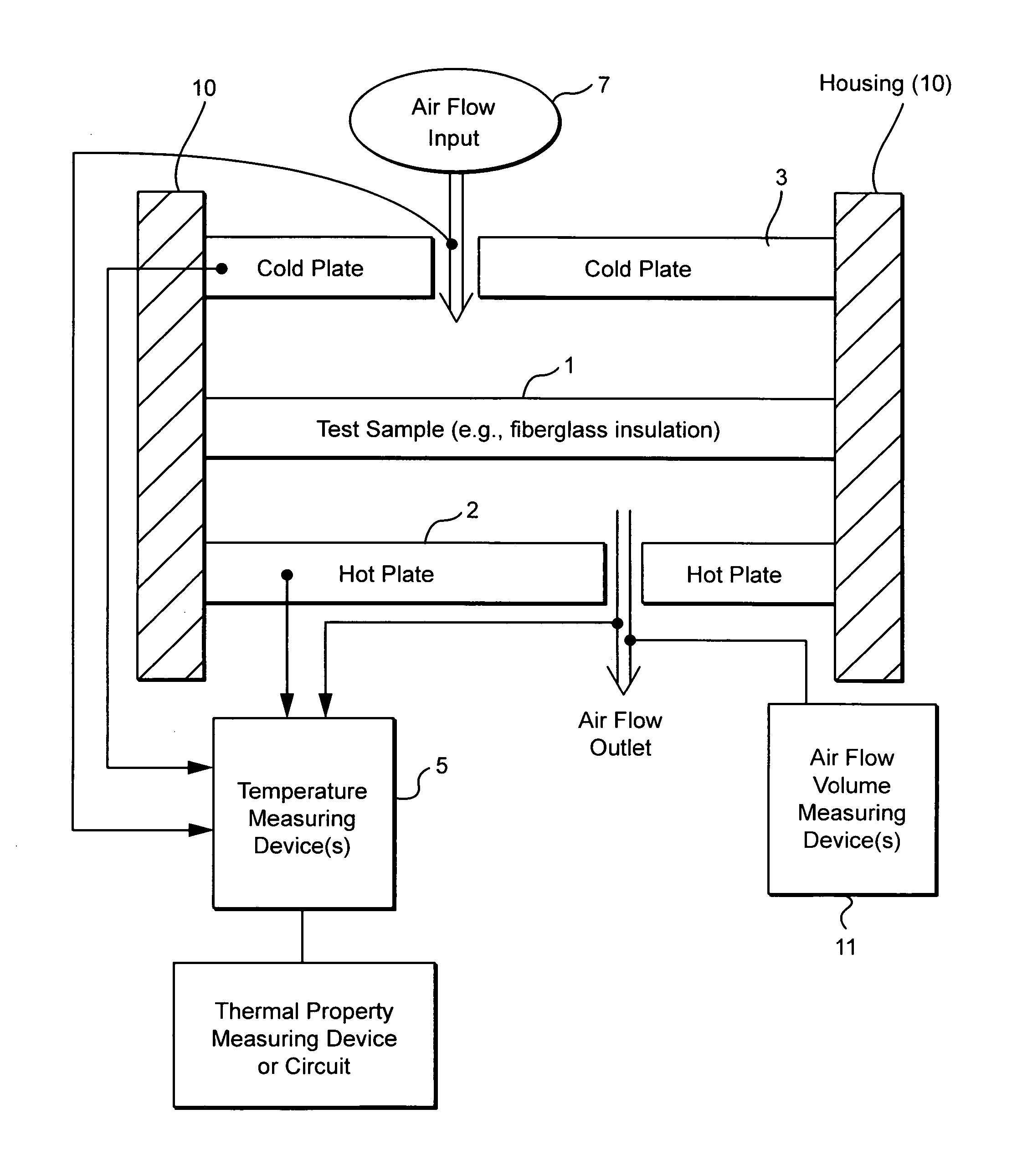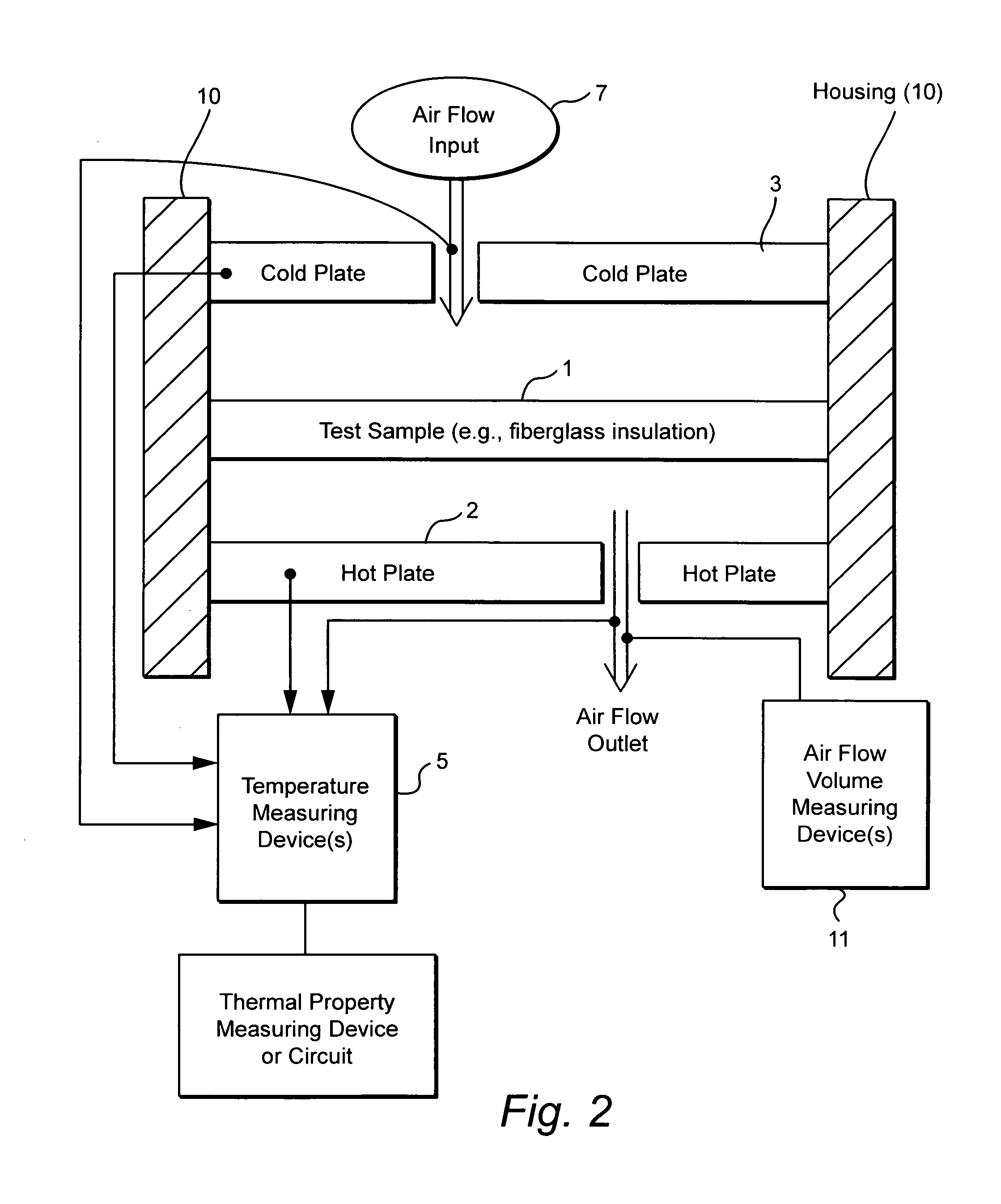Method and/or system for compensating for effects of heat flow and/or air flow through fiberglass insulation
a technology of heat flow and air flow, applied in the direction of heat measurement, building repairs, instruments, etc., can solve the problems of air flow, deception of measurement results, air flow through the wall, etc., and achieve the effect of reducing the amount of hea
- Summary
- Abstract
- Description
- Claims
- Application Information
AI Technical Summary
Benefits of technology
Problems solved by technology
Method used
Image
Examples
Embodiment Construction
[0024]Referring now more particularly to the accompanying drawings in which like reference numerals indicate like parts throughout the several views.
[0025]Certain example embodiments of this invention relate to a method and / or system that compensates for the flow of air through fiberglass insulation. In certain example embodiments, dynamic heat flow meter or the like is provided for measuring the thermal properties of a material (e.g., insulation such as fiberglass inclusive insulation, or any other suitable material) including determining any detrimental effects of air flow therethrough. Once the possible detrimental effects associated with air flow are recognized, the insulation system is adapted (e.g., by providing a foam based insulation in a wall cavity in addition to the fiberglass insulation) to compensate, or substantially compensate, for the effects of air flow through the fiberglass. For instance, a sufficient amount of foam insulation may be provided in the cavity adjacen...
PUM
| Property | Measurement | Unit |
|---|---|---|
| thick | aaaaa | aaaaa |
| thick | aaaaa | aaaaa |
| thick | aaaaa | aaaaa |
Abstract
Description
Claims
Application Information
 Login to View More
Login to View More - R&D
- Intellectual Property
- Life Sciences
- Materials
- Tech Scout
- Unparalleled Data Quality
- Higher Quality Content
- 60% Fewer Hallucinations
Browse by: Latest US Patents, China's latest patents, Technical Efficacy Thesaurus, Application Domain, Technology Topic, Popular Technical Reports.
© 2025 PatSnap. All rights reserved.Legal|Privacy policy|Modern Slavery Act Transparency Statement|Sitemap|About US| Contact US: help@patsnap.com



